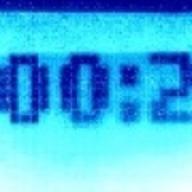請懂得音响人士代翻譯為中文,謝謝!
請朋友不要用網上翻譯器代做,因為翻譯並不正確的!
The ReverbStation is a reverb effect, which enriches the sound with spatial impression. It can emulate different types of virtual spaces - from very small rooms to huge halls, theaters and even some unreal spaces (since the decay time can be huge, even eternal).
The most basic but useful tip is to use the default presets, which come with the reverb as a base for building your own virtual spaces.
The controls
Input Level - controlls the input level. It should generally be at 100%. It is useful for more subtle control of the levels inside the reveb and for avoiding clipping.
Bandwidth - this is a low pass filter for the early reflections and late reverb. It does not affect the dry signal. It is used for simulating spaces with more absorbtive walls.
Early Reflections - they give spatial impression to the reverb, useful mainly for smaller spaces. This knob controlls their level in the signal mix.
Reverb - the level of late reverb in the signal mix.
Dry signal - the level of the dry signal in the signal mix.
Pre-delay - the delay after which the early reflections and late reverb will arrive. The greater the amount, the bigger the virtual space, since it takes longer for the signal to bounce off the more distant walls.
Decay Time - the time it takes for the reverb to decrease approx. 60dB.
x10 leds - both leds multiply the values of their corresponding knobs (the final values are shown in
the lcds). So if we want a pre-delay of 200ms, we switch on the led and set the pre-delay knob to 20.
Turning the knob while the led is on will keep the value multiplied. Switching the led off will imediately return the value to normal state.
急:請玩音響高手代翻譯以下關於混音軟件的文字
2008-05-19 12:40 am
回答 (2)
2008-05-20 4:42 am
✔ 最佳答案
該reverbstation是一個混響效果,豐富的聲音與空間的印象。它可以學習不同類型的虛擬空間-從非常小的房間,巨大的禮堂,影劇院,甚至有些虛幻的空間(自衰減時間可以是巨大的,甚至永恆) 。 最基本的,但有用的技巧就是使用默認的預置,來與混響為基地,建立一個屬於你自己的虛擬空間。
管制
投入水平-控制輸入的水平。它一般應在100 % 。它是有益的更為微妙的控制水平內reveb和避免削波。
帶寬-這是一個低通濾波器,為早日思考和後期混響。它不影響幹的信號。它用於模擬空間與更多的absorbtive牆壁。
早期的思考-他們給予的空間印象,混響,有用的,主要為規模較小的空間。這旋鈕控制他們的水平在信號組合。
混響-的水平,後期混響在信號組合。
幹信號-水平幹信號的信號組合。
前拖延-拖延後,早期和晚期的思考混響將抵達。更大的數額,更大的虛擬空間,因為它需要較長時間,為信號的彈跳,更遙遠的牆壁。
衰減時間-所花費的時間為混響減少約。 60分貝。
x10的發光二極管-這兩個發光二極管倍增的價值觀及其相應的旋鈕(最後的價值觀,顯示在
該液晶顯示器) 。因此,如果我們希望有一個預先延遲在200 ms ,我們對開關的發光二極管,並設置前延遲旋鈕20 。
把旋鈕而導致的是會繼續的價值成倍增加。切換導致小康將立即返回值正常狀態。
2008-05-25 10:30 pm
x10 leds - both leds multiply the values of their corresponding knobs (the final values are shown in the lcds). So if we want a pre-delay of 200ms, we switch on the led and set the pre-delay knob to 20. Turning the knob while the led is on will keep the value multiplied. Switching the led off will imediately return the value to normal state.
只翻譯其中一段如下,
當 x10 的 LED 亮起, 表示旋鈕的數值需要乘上10, 實際延時的數字會顯示在LCD上. 例如, 選擇使 x10 的 LED 發亮並且旋鈕調到20的位置, 提前延時 20ms x10 = 200ms. 假如此時選擇關閉 x10 的 LED, 提前延時則為 20ms x1 = 20ms.
只翻譯其中一段如下,
當 x10 的 LED 亮起, 表示旋鈕的數值需要乘上10, 實際延時的數字會顯示在LCD上. 例如, 選擇使 x10 的 LED 發亮並且旋鈕調到20的位置, 提前延時 20ms x10 = 200ms. 假如此時選擇關閉 x10 的 LED, 提前延時則為 20ms x1 = 20ms.
收錄日期: 2021-04-19 01:08:20
原文連結 [永久失效]:
https://hk.answers.yahoo.com/question/index?qid=20080518000051KK02040


